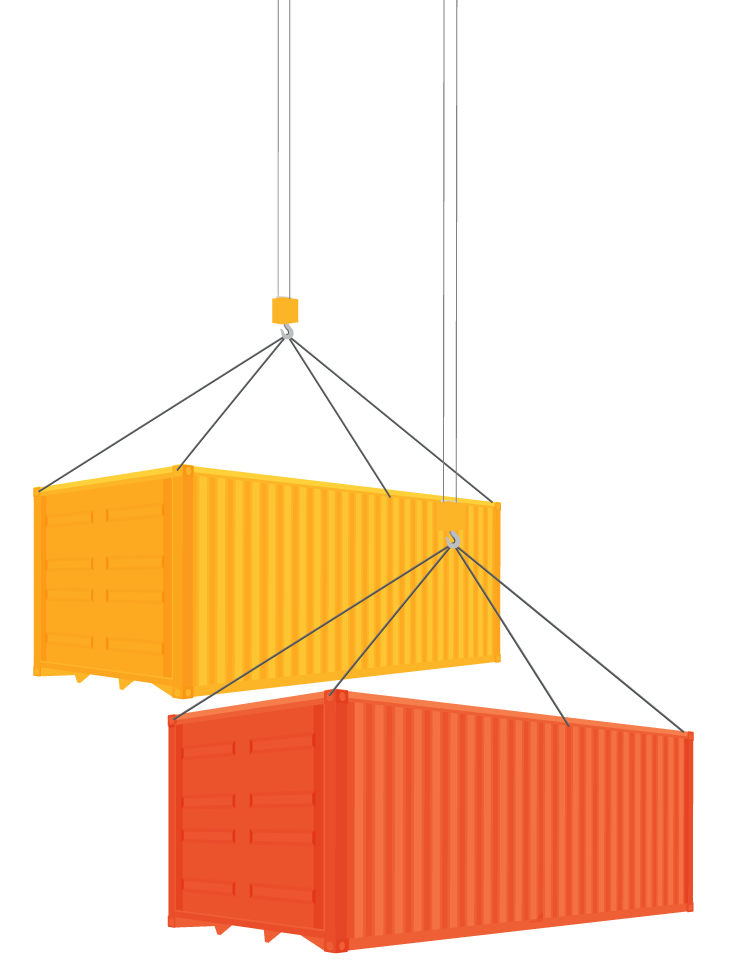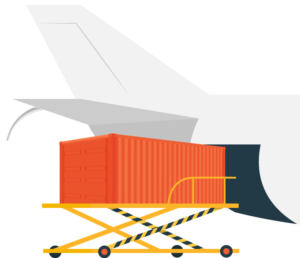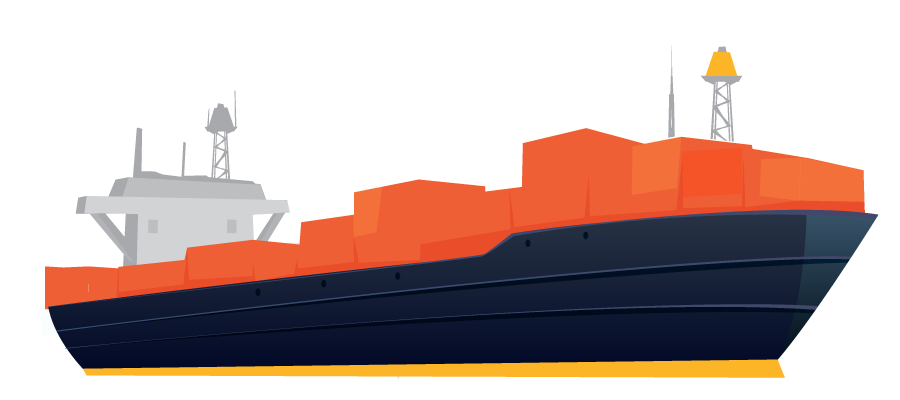
With the help of technology, precisely monitor your freight to stay ahead of maximizing margins.
CARGO SHIPS. FREIGHT TRAINS. AUTOMOBILES
Your goods travel far before making it home.
The costing tools within your home furnishings technology solution can be a valuable resource for monitoring variable costs, managing accounting accurately, pricing to ensure margin attainment, and devising partner strategies.
In this article, we demonstrate how furniture and appliance retail freight and costing tools can provide a competitive advantage in a competitive market.

Let’s start by defining important terms and measurements we’ll use in this piece.
- MATERIAL COSTS: This metric represents the dollar value of the physical merchandise as seen on the Purchase Order from your vendor.
- FREIGHT & LANDED ADD-ONS: An itemized breakdown of the various cost components that go into transporting your goods across your supply chain. In addition to the freight or actual transportation expenses, landed add-ons can include insurance fees, customs, duties, tariffs, as well as other origin and destination charges.
- Landed Cost: By adding a product’s material cost, freight, and landed add-ons, you get the total landed cost of your goods.
- Cost of Goods Sold (COGS): This metric represents the total expenses incurred in procuring merchandise, accounted for at the time the product is sold.
- Gross Margin: Calculated by subtracting the COGS from the selling price of those same goods and then dividing by the selling price; this metric is expressed as a percentage and measures profitability.
Accounting for Freight in your COGS provides greater precision.
Now that we have reviewed important measures to monitor the true costs of obtaining your furniture, bedding, and appliance inventory, let’s explore four key steps to managing freight using technology. With these steps, you can optimize the costs associated with procuring your merchandise. After all, we master what we measure.

1. Landed Add-On Costs
With costing tools in your inventory management system, you can determine the landed add-on costs you want to account for. Your furniture retail technology solution should provide flexibility in determining what you want to measure. Landed add-ons can be set up globally, by vendor, by vendor ship-from, or by product depending on the level of variation in your merchandise assortment. Sourcing internationally vs. domestically can cause high variation in these costs.

Freight & Landed Add-Ons include:
- FREIGHT: The charges associated with the logistics companies physically moving goods from point A to B.
- TARIFFS & DUTIES: Import and export fees imposed by governments to move goods across borders.
- INSURANCE: Optional plans to minimize and protect against risk if goods are damaged or lost in transit.
- FREIGHT FORWARDERS: Third-party agents that may be contracted to assist in organizing transport along a portion of the supply chain.
By itemizing these variables, you can isolate your costs and make business determinations, such as reviewing the supply chain partners you work with to lower your expenses.
2. Calculations for Approximations
When facing variable costs, you need reliable data to make timely merchandising decisions. Now that you have determined which landed add-on costs you want to track, it’s time to do some freight approximations. The Purchase Orders you receive from your vendors will provide products, quantities, and material costs. However, it can take months to receive its associated freight bill and understand your true landed COGS. In that time, you may sell a substantial quantity of the inventory you receive. However, if you are not accounting for the freight and landed add-on costs, you can be severely underpricing your merchandise. In fact, when you later receive your freight bill, you may realize you did not hit your margin goals, especially when logistical costs rise.
Software is here to help during that time gap. Within your system, you can set up freight factors to approximate your freight and landed add-on values. Upon receiving the purchase order in your distribution center or warehouse, the configured freight factors in your software will approximate the values based on the PO’s material cost. Your freight and each landed add-on can be calculated uniquely.
Here are the methods for the math:
- FLAT $ AMOUNT: Use this method to associate a fixed, flat rate to your freight or to a landed add-on.
- PERCENTAGE: For costs with variation, calculate each as a percent of the good’s material cost.
- CALCULATED: Some freight factors are more complex and may require a custom calculation.
As an example, you may configure the system settings to reflect the following scenario: when bringing in SKU ABC from Vendor X’s factory in Vietnam, you estimate your freight is 10% of the material cost, a tariff of 5% applies, and a flat fee of $300 is added for insurance.
Using approximations for your freight and landed add-on can give you a fundamental understanding of cost at the time it’s most important – when you are pricing your goods. By using estimates, you are much closer to the landed cost of goods and can ensure you are meeting your margin goals, even before receiving your freight bill.


 When you choose , you get more than an industry-trusted retail software solution. You get the know-how of our team of experts, superior service, and opportunities for growth. Use the form below to learn what can do for you.
When you choose , you get more than an industry-trusted retail software solution. You get the know-how of our team of experts, superior service, and opportunities for growth. Use the form below to learn what can do for you.